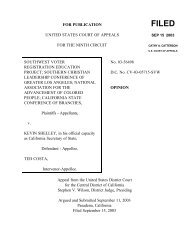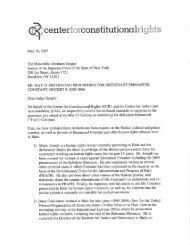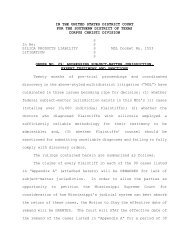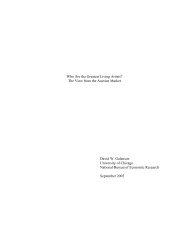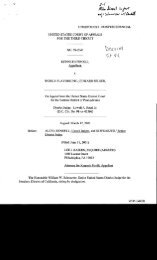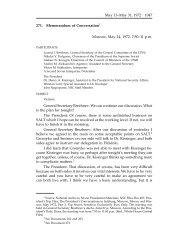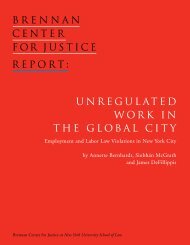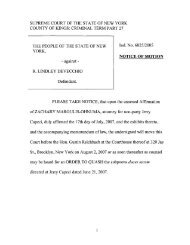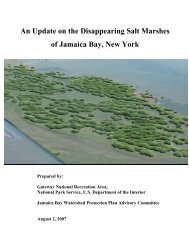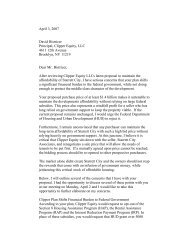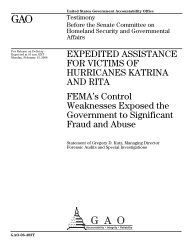UNITED STATES DISTRICT COURT SOUTHERN DISTRICT OF ...
UNITED STATES DISTRICT COURT SOUTHERN DISTRICT OF ...
UNITED STATES DISTRICT COURT SOUTHERN DISTRICT OF ...
Create successful ePaper yourself
Turn your PDF publications into a flip-book with our unique Google optimized e-Paper software.
Case 1:08-cv-07837-PAC Document 51 Filed 10/31/2008 Page 25 of 26<br />
2. Application<br />
Plaintiffs argue that the 25/30 Rules should be preempted under the CAA because, even<br />
though the TLC rules regulate fuel economy, their purpose and effect is to regulate emissions,<br />
which is the exclusive province of the federal government. This argument would appear to be<br />
foreclosed under the reasoning of Green Mountain and Central Valley, where the courts found<br />
that GHG emissions regulations were not preempted by the EPCA because the regulations were<br />
not de facto fuel economy standards and because emissions regulations do not “relate to” fuel<br />
economy standards within the meaning intended by Congress in the EPCA preemption statute.<br />
See Green Mountain, 508 F. Supp. 2d at 353-54; Cent. Valley, 529 F. Supp. 2d at 1176.<br />
In this case the argument is reversed—Plaintiffs claim that a fuel economy regulation<br />
should be preempted by the CAA, which exclusively governs emissions regulation. Plaintiffs<br />
have failed to show a likelihood of success on this issue because both Green Mountain and<br />
Central Valley make clear that the preemption provisions of the EPCA and the CAA relate<br />
specifically to their defined categories—fuel economy and emission regulation, respectively—<br />
and while they may overlap, they do not conflict. Thus, crossover between the two for<br />
preemption purposes is not automatic. Cent. Valley, 529 F. Supp. 2d at 1175. It follows that<br />
Plaintiffs here cannot simply stretch the CAA’s preemption provision for emissions regulation to<br />
cover the 25/30 Rules, which by their terms cover only mileage standards and are silent as to<br />
emissions.<br />
Plaintiffs fail to show how the 25/30 Rules are a “standard relating to the control of<br />
emissions from new motor vehicles,” as required under the preemption provision of CAA § 209.<br />
At this stage of the proceedings the Court cannot accept Plaintiffs’ argument that the only<br />
purpose of the 25/30 Rules is to affect emissions. As indicated, the Court has limited its review<br />
25



